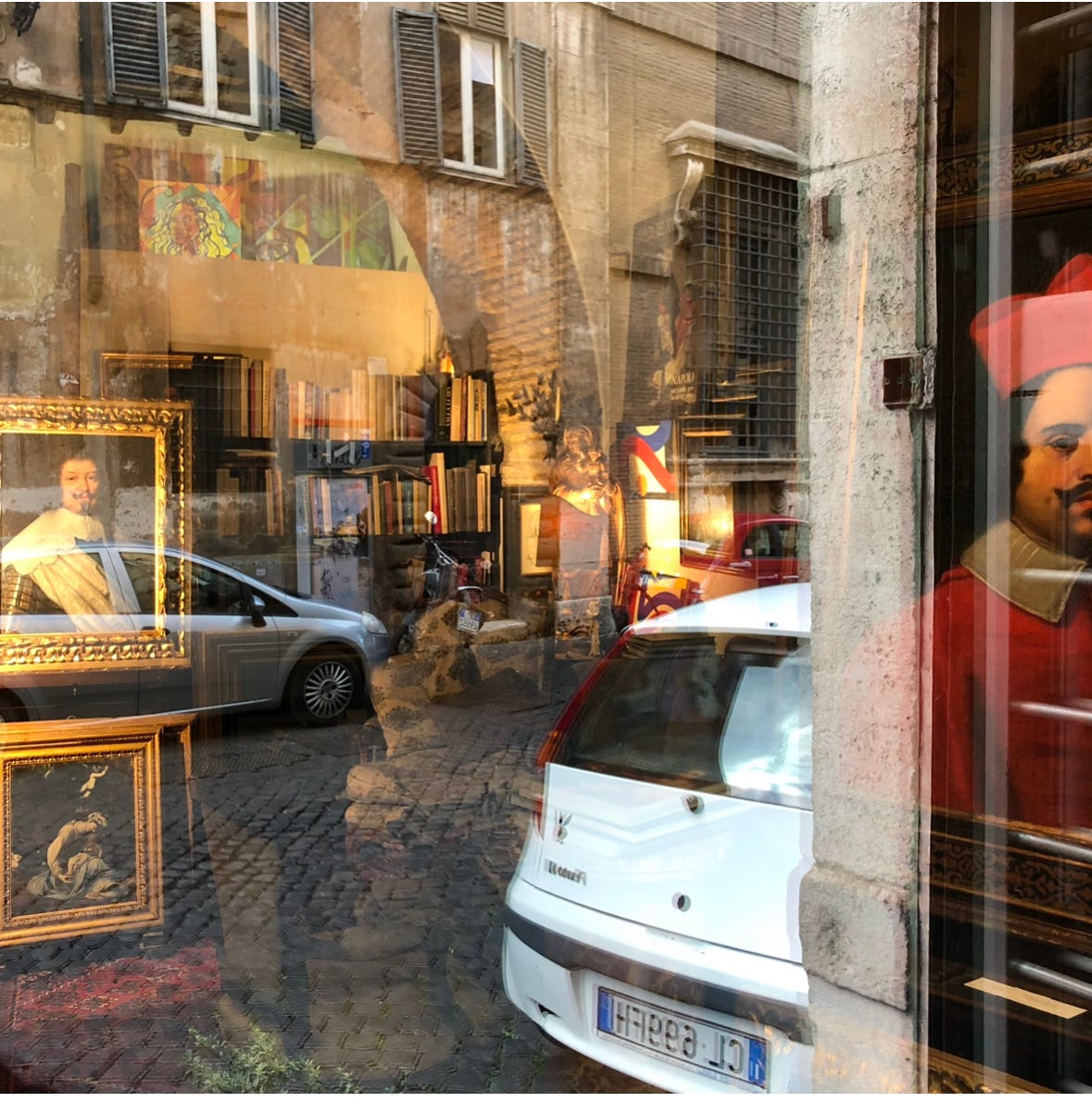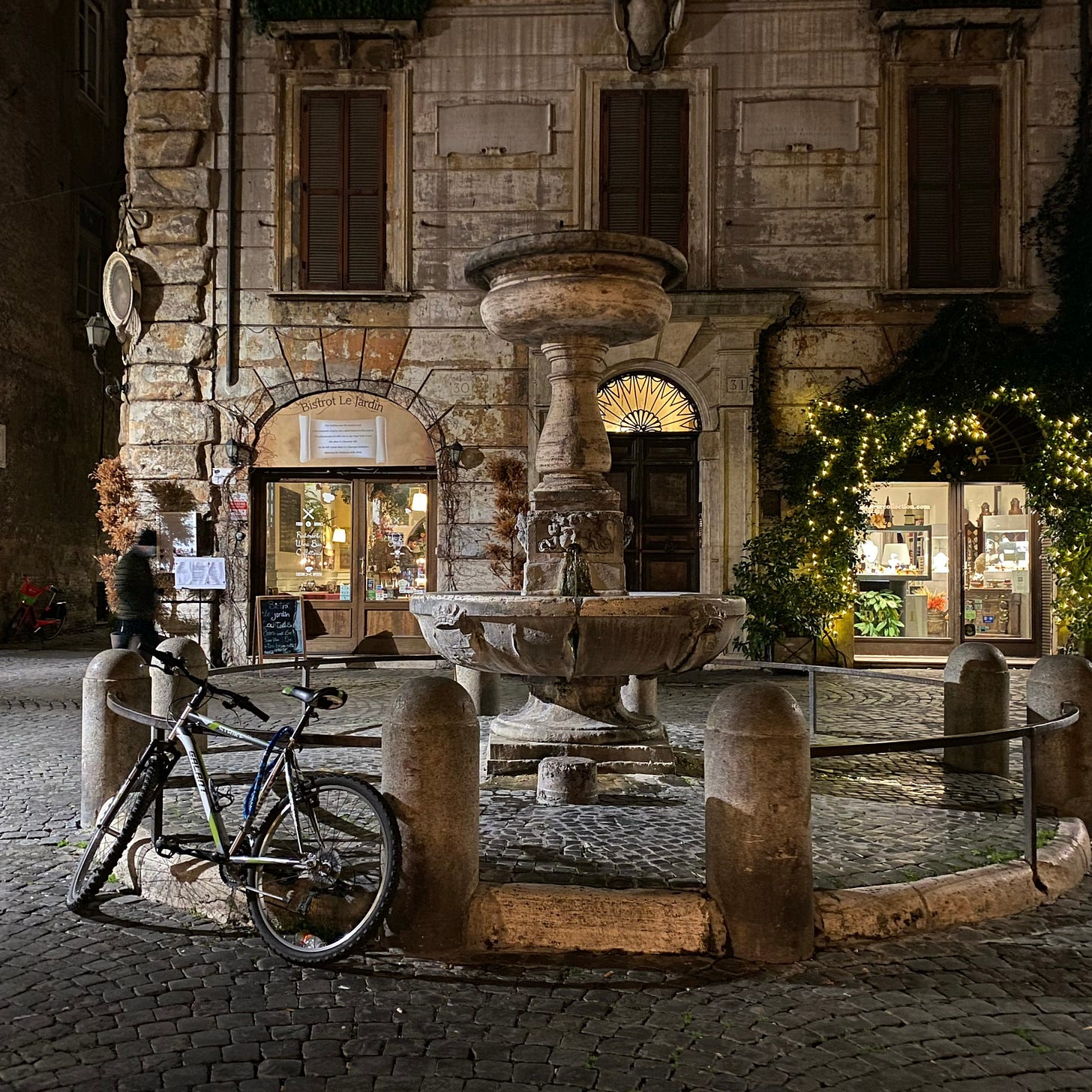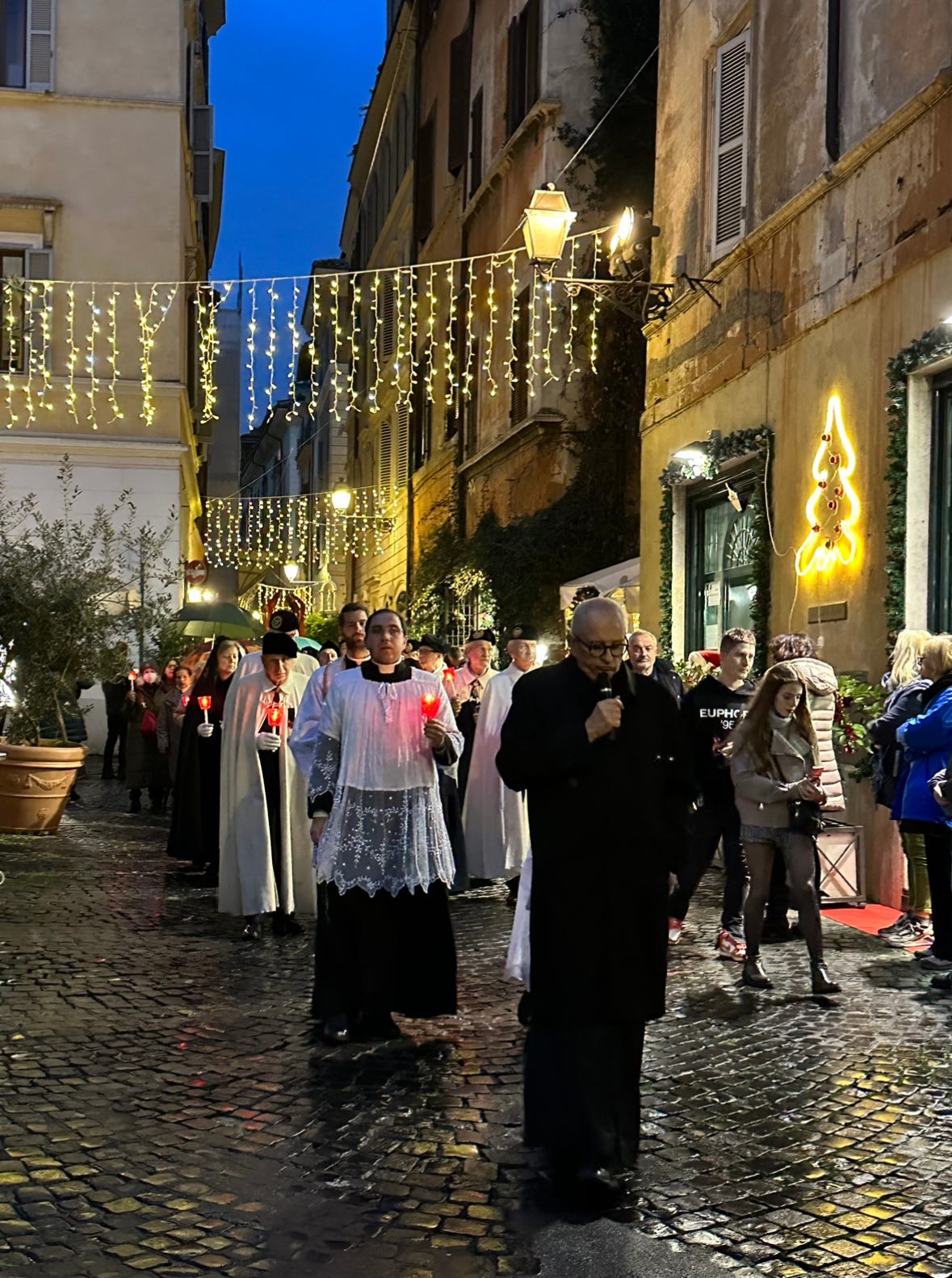This week children in Rome went back to school, the last piece of the end-of-summer puzzle which sees the traffic back to pre-pandemic norms after the August lull. Autumn beckons. As I negotiate my Vespa through the gridlock, exacerbated by roadworks and changes to the one-way systems around the Vatican in view of the Jubilee Year of 2025, I may well be singing this paean to roads less travelled—literal and metaphorical.
The first Jubilee was celebrated in Rome in 1300 by order of Boniface VIII (whose subsequent kidnapping and death in Anagni led to the Babylonian Captivity of the papacy at Avignon). I think I’m unlikely to be struck by lightning for suggesting that the motivation for the creation of this first Holy Year of pilgrimage was in great part economic. The already long-established routes of medieval pilgrimage funnelled the great, the good, and the downtrodden with a certain egalitarianism towards their final objective: the shrine above the tomb of Peter in the Vatican. Rome may have been busy this summer but it is certainly not a new phenomenon, weary pilgrims were coming here in their droves a thousand and more years ago.
If today crowds are to be found at the Trevi Fountain then they were teeming at the shrines to the early martyrs: the churches of San Paolo and San Lorenzo fuori le Mura once had covered walkways running a kilometre or two from the ancient city walls to protect the pilgrims from the elements; if you visit the the tomb of Saint Sebastian at the catacombs on the Appian Way the remains of a double staircase—a medieval one-way system—to cope with the hordes of visitors is still visible. Today, even in high summer, you can usually have these churches to yourself: the focus may have changed but Rome has always attracted far more visitors than those who live in the city.
Throughout the last millennium and more, however, crowds at the Vatican have been a constant. The rise of the Church from the ashes of Empire was accompanied by a shift in the centre of gravity of the massively depopulated city: over a million people in the year one hundred; perhaps twenty-thousand in the year one thousand. The Forum was abandoned to become little more than a quarry for spare parts and grazing land, and the once extra-urban Vatican field and its basilica became the new magnet of power. Roads funnelling pilgrims toward the tomb of Peter were lined with shops,
Keep reading with a 7-day free trial
Subscribe to Understanding Rome's Newsletter to keep reading this post and get 7 days of free access to the full post archives.






